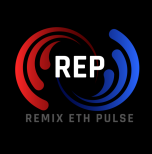Trends We’re Watching
a16z has released a comprehensive list of “big ideas” for the coming year, aimed at inspiring technology builders, based on its partners’ observations in the fields of AI, US vitality, life sciences/health, cryptocurrencies, enterprise services, fintech, gaming, and infrastructure. The following are some important ideas shared by the cryptocurrency team members, with more exciting content available in the full article.
More Businesses Will Accept Stablecoin Payments
In the past year, stablecoins have found a fit in terms of product and market – this is not surprising, as stablecoins offer the lowest cost for sending US dollars, enabling fast global payments. Additionally, stablecoins provide entrepreneurs with a more convenient platform to develop new payment products, without the need for intermediaries, minimum balance requirements, or exclusive SDKs. However, large enterprises have yet to realize the significant cost savings and new profit opportunities that come with transitioning to these payment rails.
While we have already seen some interest from businesses in stablecoins (as well as early applications in peer-to-peer payments), I anticipate a wave of larger experiments in 2025. Small to medium-sized businesses with strong brand influence, loyal customer bases, and high payment costs (such as restaurants, cafes, and convenience stores) may be the first to switch from credit cards to stablecoin payments.
These businesses do not benefit from credit card fraud protection (especially in face-to-face transactions), and the high transaction fees have a significant impact on their profits (the cost of 30 cents per cup of coffee is huge for profit loss).
We should also expect larger-scale enterprises to start adopting stablecoins. If stablecoins can accelerate the evolution of banking history, enterprises will attempt to disintermediate payment service providers by directly adding 2% profit to their bottom line. Additionally, enterprises will seek new solutions to address the problems currently solved by credit card companies, such as fraud protection and identity verification.
-Sam Broner (X platform @sambroner | Farcaster platform @sambroner)
Countries Exploring On-Chain Sovereign Bonds
On-chain sovereign bonds will create government-backed, interest-bearing digital assets while avoiding the regulatory privacy issues associated with central bank digital currencies (CBDCs). These products can provide new sources of collateral demand for lending and derivative product protocols in DeFi (decentralized finance), thereby adding more stability and credibility to these ecosystems.
As governments globally continue to explore the benefits and efficiency of public, permissionless, and tamper-proof blockchains, some countries may pilot the issuance of on-chain sovereign bonds. For example, the UK has already explored digital securities through its Financial Conduct Authority (FCA) sandbox initiative, and the UK Treasury has expressed interest in issuing digital bonds.
In the US, due to the SEC’s plan to require laborious and costly infrastructure for clearing government bonds next year, there is expected to be more discussion on how blockchain can enhance bond trading transparency, efficiency, and participation.
-Brian Quintenz (X platform @brianquintenz | Farcaster platform @brianq)
The Shift from Holders to Users: The Evolution of Crypto Users
In 2024, the crypto space made significant progress at the political level, with many key policymakers and politicians expressing positive views towards it. Meanwhile, crypto as a financial movement continued to evolve, with products like Bitcoin and Ethereum ETPs expanding investor participation. In 2025, crypto is poised to further develop as a computational movement. But where will the next user group come from?
I believe it’s time to activate the currently “passive” crypto asset holders and transform them into more active users. Currently, only 5-10% of crypto asset holders actively use crypto technology. We can bring the 617 million people who already hold crypto assets onto the chain, especially as blockchain infrastructure continues to improve and user transaction costs continue to decrease.
This means new applications will gradually emerge for existing and new users. At the same time, some early applications we have seen – covering stablecoins, DeFi, NFTs, gaming, communities, DePIN, DAOs, and prediction markets – are becoming easier for mainstream users to adopt as communities focus more on user experience and other optimizations.
-Daren Matsuoka (X platform @darenmatsuoka | Farcaster platform)
“Hiding Technical Details” to Enable Killer Web3 Applications
The technological advantages of the blockchain industry give it its unique characteristics, but they also hinder mainstream user adoption to some extent. For creators and fans, blockchain technology brings new possibilities for connectivity, ownership, and monetization… However, industry-specific terms (such as “NFTs” and “zkRollups”) and complex designs have become barriers for those who could benefit most. In countless conversations with executives in the media, music, and fashion industries about Web3, I have seen this firsthand.
The widespread adoption of many consumer technologies has followed a similar path: technology first, followed by a pivotal company or designer abstracting away complexity to create breakthrough applications. Think of the development of email – the SMTP protocol was hidden behind the “send” button; or credit cards, where most users today don’t care about the payment rail behind it. Similarly, Spotify’s music revolution was not achieved by flaunting file formats but by delivering playlists directly to users’ fingertips. As Nassim Taleb said, “Overengineering leads to fragility, simplicity is scalable.”
Therefore, I believe that in 2025, our industry will embrace the concept of “hiding technical details”. The best decentralized applications have already started focusing on intuitive interface design, making operations as simple as clicking a screen or swiping a card. In 2025, we will see more companies dedicated to clean design and clear communication; successful products do not require explanation, they directly solve problems.
6 Trends in Decentralized Governance in 2025
2025 promises to be an exciting year for decentralized governance. Decentralized autonomous organizations (DAOs) are constantly innovating, exploring new models of collective governance for anonymous token holders. Investment management companies are working to convince clients to participate in online shareholder voting more frequently. At the same time, AI companies are beginning to use civic assemblies to set norms for large language models (LLMs). These efforts will lead to simultaneous experiments in various forms of decentralized governance, including:
Websites to facilitate voter delegation
AI-assisted delegation mechanisms
AI acting as agents
Smarter participation incentives
More efficient public goods funding
More experiments with randomized governance
This article is a collaborative reprint from DeepTech.

